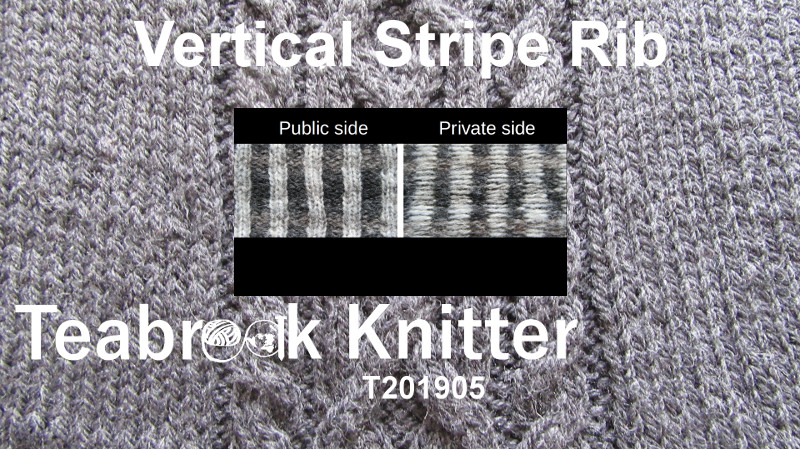Vertical stripe rib is a form of stranded knitting. It is often used for the edging of stranded knitting projects, such as cuffs and neck bands. Like standard rib it does not curl, but it does not stretch either.
Show notes for Vertical Stripe Rib T-torial (T201905)
The underlined headings below are links that take you to that section in the YouTube video for this tutorial.
Introduction
Hello! I’m Steve, also known as Teabreak Knitter on social media.
In this t-torial I want to show you how I knit vertical stripe rib, also known as cartridge rib or corrugated rib. This is knit in two colour stranded knitting, and is often used as the edging of pieces of stranded knitting, such as the cuffs and neckband. Although it is a rib, and so does not curl, it is not very stretchy, so you would not use it in areas where you want to pull the fabric in.
This is how I do vertical stripe rib.
Knitting vertical strip rib
Cartridge rib, which is also known as corrugated rib or vertical stripe stranded rib, is really simple
It is: knit 2 in the main [motif] colour and purl 2 in the background colour.
I’ll show you how you do that.
Knit 2 in the main colour, bring background colour to the front and purl it [twice]. This is just [like] standard rib: knit and purl, [but] only [with] two colours.
So now you have stranded the main colour behind the purl stitches. Take your purl [background colour] back, spread the stitches out a little bit on the needle, and knit the main colour again. Bring the [background] yarn forward, stretch out again so that the stranding at the back doesn’t pull it tight, and purl the two stitches.
[Return the yarn to the] back, knit the two [main colour] stitches. Bring the [background] yarn to the front, PURL two stitches.
So, it is as simple as that, but you have to remember to allow enough slack at the back.
How vertical stripe rib looks
Here we have some vertical stripe rib.
On the left we have the public (“right”) side, and on the right we have the private (“wrong”) side.
On the left we can see columns of light knit stitches, and the columns of dark purl stitches. Unlike conventional ribbing, the knits and the purls are both equally prominent, so the purls are not hiding behind the knit.
If you look at the right hand side of the diagram, you can see the strands passing across the back of these columns. It is these strands that stop the purl stitches receding back behind the knit stitches.
Happy knitting!
So that is how I do vertical stripe rib.
I hope you found this useful.
Until the next time,
Happy Knitting!



